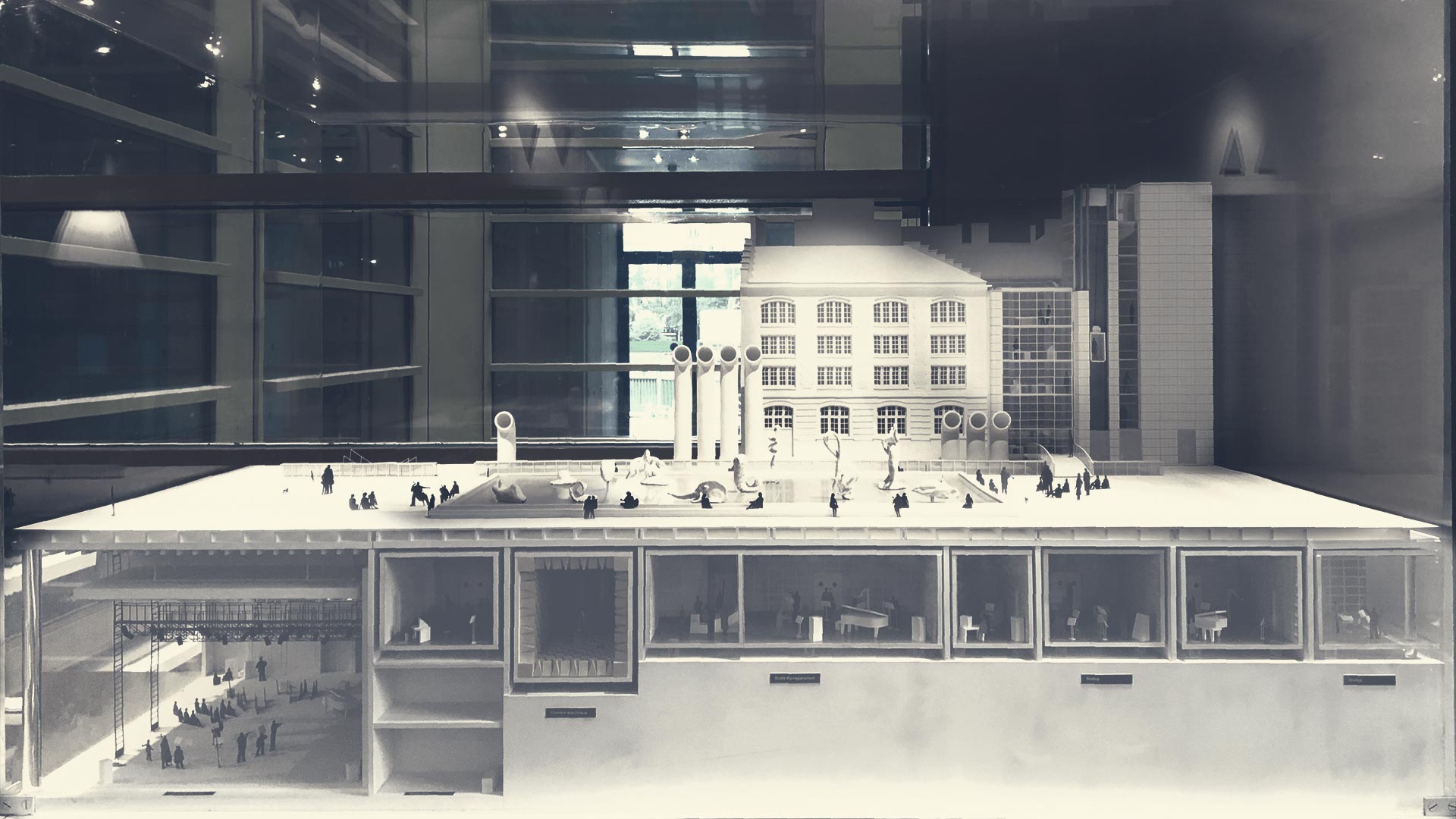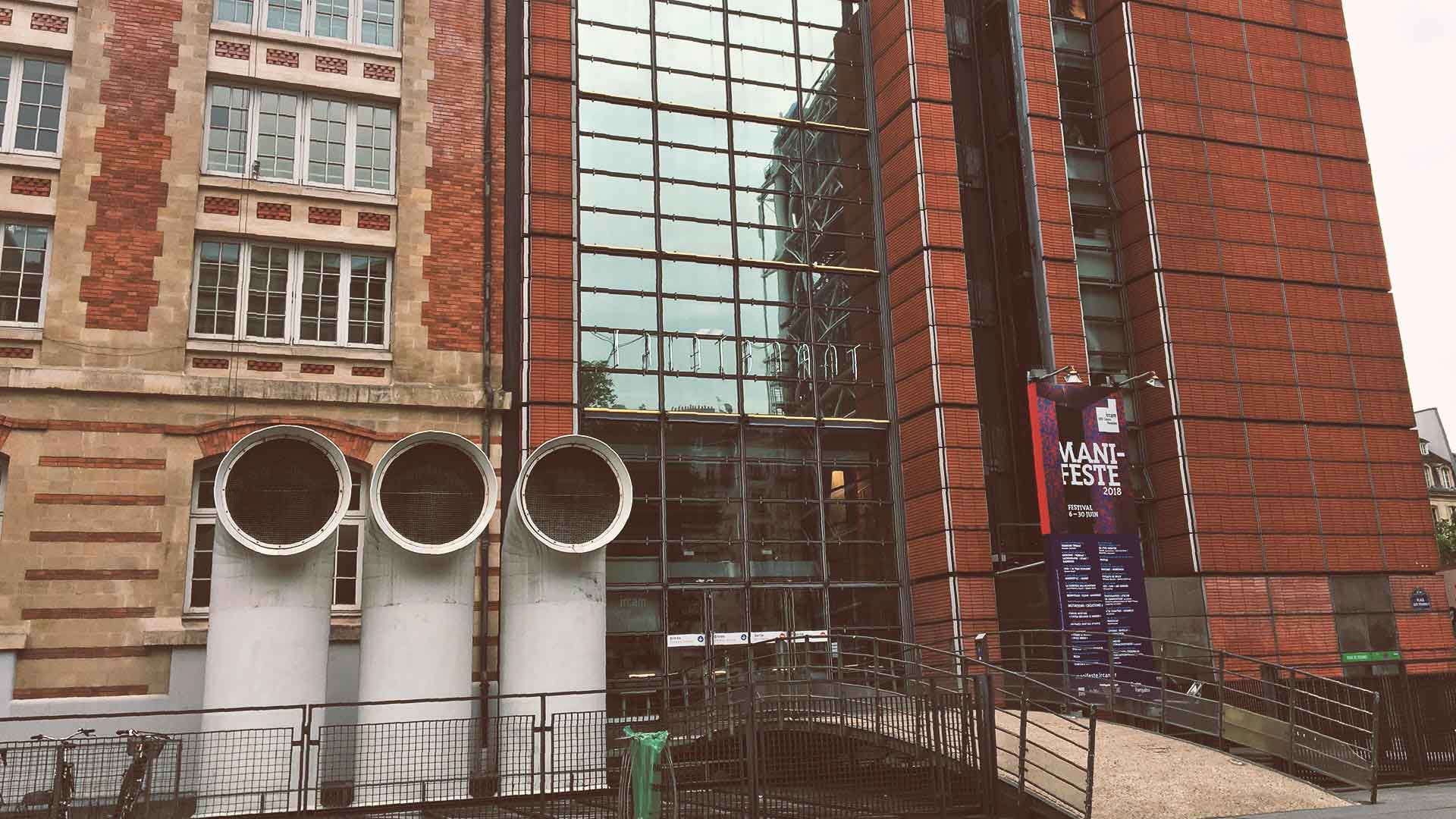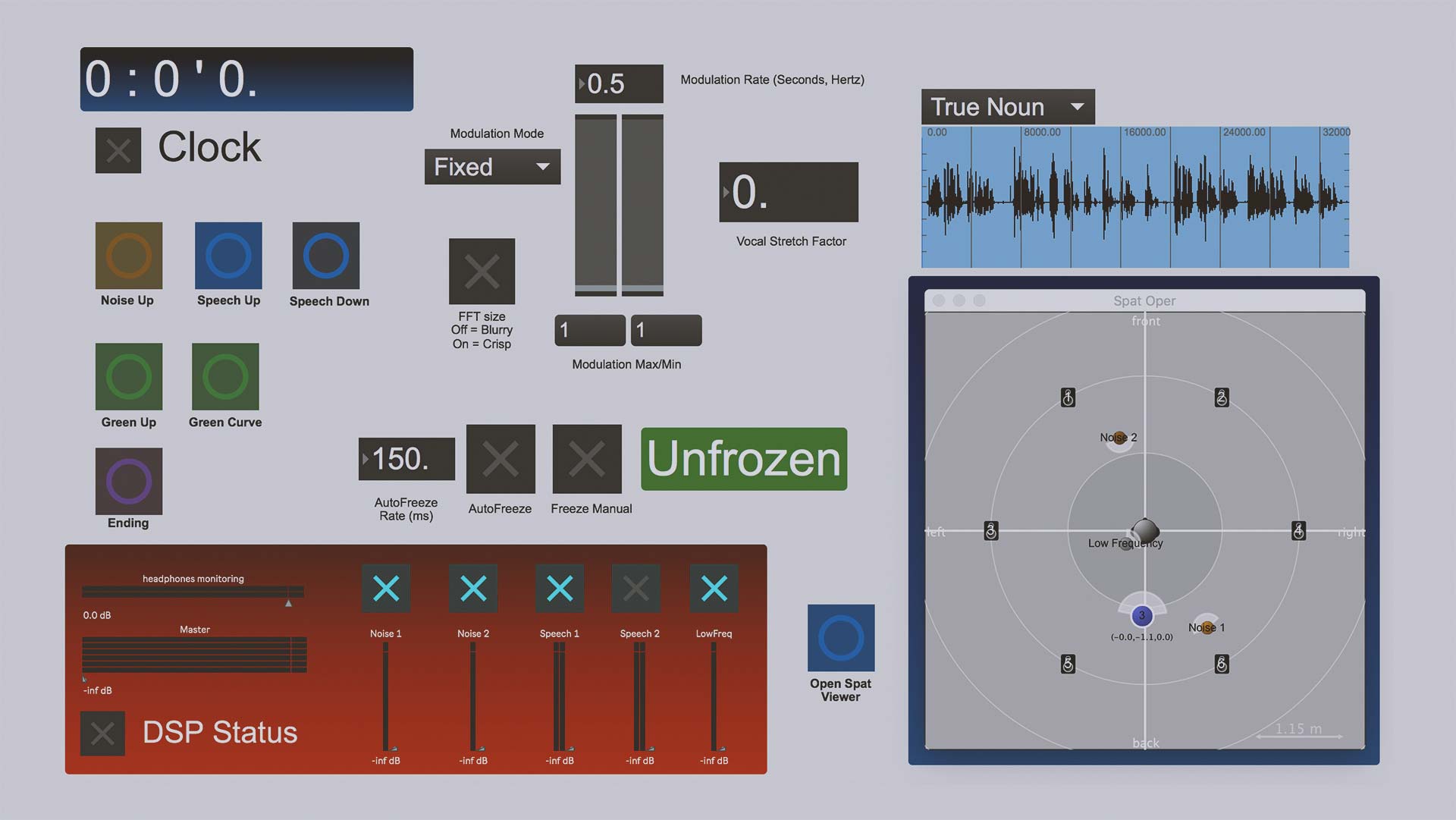


Composer's Note
It is possible to take a sample of human speech and shatter it into a mosaic of detemporalized units through the use of the Fourier Transform. These frames of static sound can then be concatenated to resynthesize the sound.
When each frame is played back consecutively at the speed of the original sample, one essentially hears the unshattered recording, with normal speech made from knotted coils of reality. But, however, as the playback speed is reduced, we are able to unravel these coils of meaning:
Words become distorted versions of themselves.
Distorted words become phonemes.
Phonemes become phones—still human-sounding.
Phones becomes musical sound.
A True Noun Does Not Exist is based on this principle.
Since spoken language is time-dependent, the knotting of reality into spoken linguistic symbols must also be time-dependent. These coils of meaning can only form if the sounds that make them are spoken quickly enough, one after the other.
As we detemporalize a piece of text, slowing it down, we inhibit the strands of symbolic coils from cohering. We explore the regions of perception in which sounds become coded into linguistic symbols by our brains—in which the endless continuum of reality condenses into clots of meaning.
The text in this work has been adapted from the 1920 edition of The Chinese Written Character as a Medium for Poetry by Ernest Fenollosa and Ezra Pound:
A true noun, an isolated thing, does not exist in nature. Things are only the terminal points, or rather the meeting points, of actions, cross-sections cut through action, snap-shots. Neither can a pure verb, an abstract motion, exist in nature. The eye sees noun and verb as one: things in motion, motion in things….
…Green is only a certain rapidity of vibration, hardness a degree of tenseness in cohering….
…No full sentence really completes a thought… The truth is that acts are successive, even continuous; one causes or passes into another. And though we may string ever so many clauses into a single compound sentence, motion leaks everywhere, like electricity from an exposed wire. All processes in nature are interrelated; and thus there could be no complete sentence (according to this definition) save one which it would take all of time to pronounce.
For more on semiotic coiling and the aesthetic underpinnings of this piece, check out Unknotting Symbols from the Strands of Reality.
A True Noun Does Not Exist was premiered 29 June 2018 in Studio 5 at IRCAM in Paris.
Cheers.






